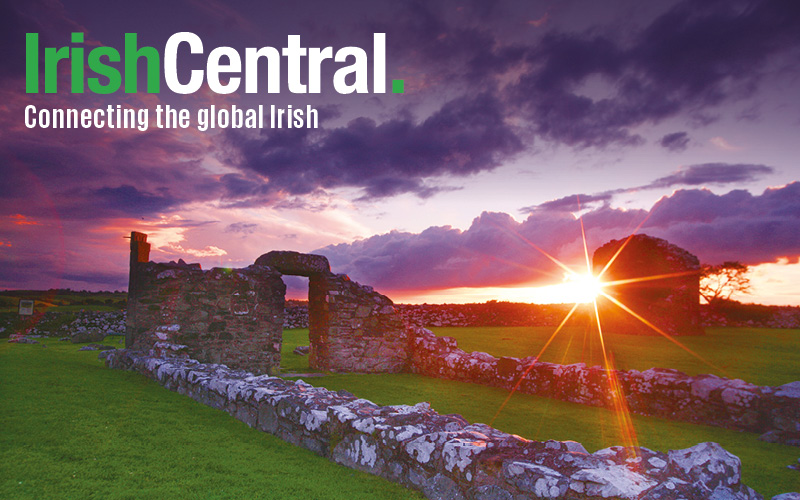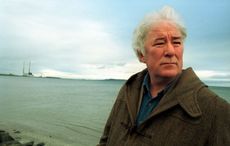I always thought Robert Frost was very sensible to ask so plainly in a poem we had to memorize for school, why it is that good fences make good neighbors:
Before I built a wall I’d ask to know
What I was walling in or walling out,
And to whom I was like to give offence.
Something there is that doesn’t love a wall,
That wants it down.
If walls could talk, what stories would they tell? I never pondered this more than in 1978 when I traveled with the North East Ulster Schools Symphony Orchestra to Germany for our annual summer trip. Ordinarily, it was two weeks in Ballycastle, County Antrim, with a concert for our parents on the final night, but this summer would be my first away from Northern Ireland, from one bitterly divided place to yet another, the latter split in two by the Berlin Wall.
At the time, I knew only a little about the wall that had been erected under the direction of Nikita Khruschev two years before I was born. By the time I was old enough to understand it, the wall was the definitive symbol of the “Iron Curtain” that had divided Eastern and Western Europe since 1945.
I remember clearly one of the teenage boys urinating on the Berlin wall, offending, as he did, some passersby who didn’t appear to understand that the wall was infinitely more offensive with its barbed wire and watchtowers and its armed guards with their shoot-to-kill orders. In retrospect, I wish there had been more like him, outraged and outspoken. We were curious and a little scared, I suspect, when we took a trip beyond the curtain and into East Berlin. We were given strict instructions not to photograph any bridges or buildings, and a young tour-guide was assigned to us. Although we were all from Northern Ireland - except the conductor and his son, who were English - most of the Catholics among us had Irish passports whereas the Protestants carried the British counterpart. This caused some delay and confusion at Checkpoint Charlie where I acquired the first stamp in my very first passport, documenting forever the borders that bear down on us, closing in on us, constricting rather than expanding our vision of what our world could be like . . .
On the other side, I remember staring out the window of an old bus at an austere city, its sad grayness a stark contrast to the bright and bustling Kurfürstendamm Avenue - Ku’damm - on the West side, where fancy restaurants, bijou boutiques, and world-class museums made it too easy to be oblivious to the wanting on the other side of that wall. Although we knew her for only the shortest time, I remember crying for the young woman who had served as our tour guide, understanding in full that she would not be able to join us in West Berlin, to hear us perform Mendelssohn’s Violin Concerto in E Minor for a radio program. I don’t suppose a group of youngsters from Northern Ireland schools made much of an impact in 1978, but a decade later, Bruce Springsteen paid a visit to East Berlin, telling a crowd that had never experienced anything quite like him - a wrecking ball even then, that he was there to rage against the injustices built up in that wall:
“I’m not here for or against any government. I’ve come to play rock ’n’ roll for you in the hope that one day all the barriers will be torn down.”
I like to think it was Springsteen rather than Reagan who urged Mikhail Gorbachev to tear down that wall and that somewhere in that crowd, was a teenage bassoonist who had relieved himself against the Berlin Wall ten years earlier.
Watching on television when the wall came down, I thought of the young tour-guide and hoped she had been reunited with family and friends in the West. Photographer Kai Wiedenhöfer documented the occasion believing that the fall of the Berlin Wall would end forever the notion that a wall is the answer to some of the most complex issues of our time. But from 1989 until 2013, he photographed what he described as a “renaissance of walls,” that includes the Peace Lines in my beloved Belfast, Northern Ireland, the West Bank fence that separates Israel and Palestine, the Demilitarized Zone between North and South Korea, and the border between Mexico and the United States.
In fact, since the Berlin Wall came down, 28 new border walls have gone up all around the world. Ironically, these walls that are going up at such an alarming rate reflect not totalitarian regimes intent on keeping their people form seeking freedom and opportunities beyond their borders; rather, democracies such as these very United States, intent on keeping such people out.
From July until November, 2013, Wiedenhöfer’s Wall on Wall exhibition featured 36 giant panoramas of modern man-made barriers glued on the longest remaining stretch of the Berlin Wall. Perhaps the installation helped spark a conversation about why so many of the walls between us today are taller, longer, and stronger than any we could have imagined on that jubilant November day in 1989 when echoes of Kennedy’s visit to Berlin in 1963 rang out:
“Ich bin ein Berliner.”
Perhaps it played a part in the story I saw splashed across the front page of the Belfast Telegraph this weekend that the walls have been coming down, thanks to negotiations that did not make the front pages. In the past two years, six of the walls have been removed, and more are slated to come down.
Peace comes dropping slow.
The walls of the “Peace Line” started going up in 1969, intended to keep apart Belfast’s two divided communities. While these walls were erected only as a temporary measure, many have stood for over four decades. That’s the thing about a wall - once it goes up, it seems to take a very long time to come down. It becomes a part of our external and internal geography, at once keeping us a part and apart.
Something there is that doesn’t love a wall.




Comments